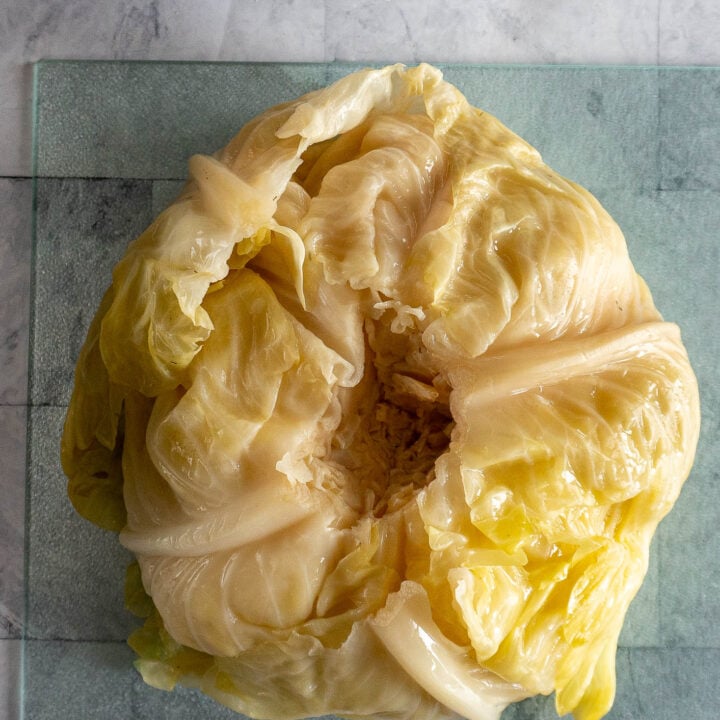How To: Sour Cabbage
4.3
(4)
Your folders
Your folders
Prep Time: 15 minutes
Total: 1 hours, 15 minutes
Servings: 2
Author : Allyson Letal @ cravethegood.com

Ingredients
Export 1 ingredients for grocery delivery
Instructions
Step 1
Determine the size of your brining container. This will vary depending on the size of the cabbage heads and the quantity you'll be souring.
Step 2
Once you've determined your container size, you'll want to reduce about 20% of the total volume and consider that to be your brine quantity. For example, 12 L tote, so I'll use 10L of brine.
Step 3
Calculate and measure out the amount of salt, vinegar, and salt necessary for your brine. The amounts are as follows:- 200g of salt / 10 litres of water- 3 tablespoons of vinegar / 10 litres of water- 1 1/2 tablespoons of sugar / 10 litres of water
Step 4
Rinse your cabbage heads well to remove dirt and debris. Don't be afraid to remove any particularly ugly outer leaves. If they're split, have holes, or bug bites in them, it's best to remove them at the start.
Step 5
Using a sharp knife with a sturdy blade, cut a rectangular wedge around the core. Ensure you're cutting deep enough to remove the whole fibrous core.
Step 6
Taking from your previously weighed salt, fill the cavities where you cut the stems out. Fill the cavity about 3/4 full.
Step 7
Stack the cabbages as tightly as possible in your fermentation vessel.
Step 8
Add the previously measured vinegar, sugar, and remaining salt. If desired, add some dried dill to the brine.
Step 9
Start adding hot water to your vessel, ensuring to only add what you've accounted for in the beginning. NOTE: If you're using a very large fermentation container, it is advisable to place it where you want it to ferment to avoid moving a too heavy container.
Step 10
Place your weight on top of the cabbage to keep it submerged in the brine.
Step 11
Cover your fermentation container, and place it somewhere out of the way to ferment.
Step 12
Every 3 - 4 days, wash your hands and forearms well, then rotate the cabbage.
Step 13
The fermentation process will take between 3 and 4 weeks, depending on your ambient temperatures. You'll know the fermentation is complete when the leaves are soft to the touch and have a slight translucency. The color of the interior leaves will look quite white while the outside may look green. Another great way to tell if the ferment is complete is by tasting it! The flavor of the leaves should be salty but have that characteristic tang, and the texture should be tender, but not mushy.
Step 14
When ready to harvest, working one head of cabbage at a time, remove from the brine, and flip upside down to allow the brine to drain as much as possible.
Step 15
Gently pull the stems of each leaf, working from the outside inward to loosen them. Once you reach the middle of the cabbage, pull out any leaves that are too small to be rolled into cabbage rolls and set them aside, these are not wasted!
Step 16
Working from the outside gently remove the leaves and slice a triangle shape around the stem to remove it.
Step 17
Layer the de-veined leaves in a colander until ready to package.
Step 18
Once the leaves have been placed in the desired container, add 1/4 - 1/2 cup of brine back into the container.
Step 19
If you're making cabbage rolls within the next 2-3 days, store your leaves in the fridge until you're ready for them! If you're not planning on making cabbage rolls for a few months, your cabbage should be packed and frozen.